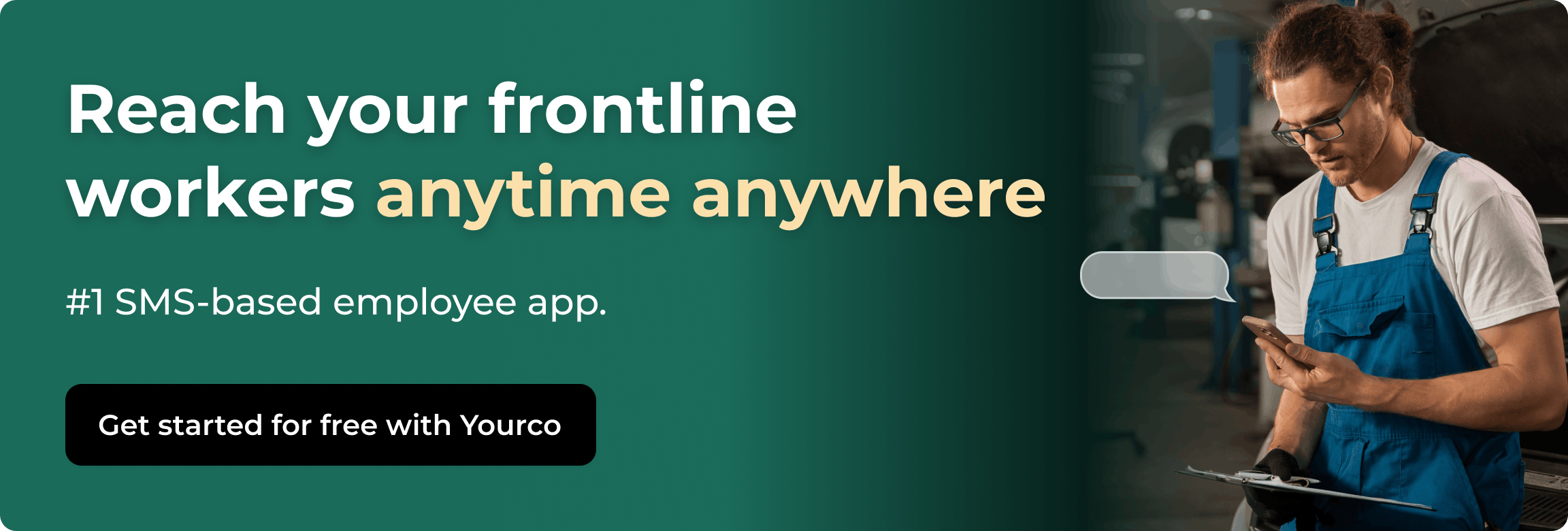How to Train Workers on Safe Equipment Use


Workplace accidents often happen when equipment is misused. Recent statistics show improper equipment operation remains a leading cause of workplace injuries and fatalities, highlighting the importance of following workplace safety rules. A polypropylene manufacturing incident that killed a worker demonstrates what happens without proper safety training.
OSHA requires thorough safety training for anyone using workplace equipment. This training must come from qualified persons in a language and format that workers understand. Providing worker training on the safe use of the equipment reduces accident rates and associated costs.
Companies must keep detailed documentation of all training sessions, including topics covered, trainer qualifications, and who attended.
Understanding Employer Responsibilities in Providing Worker Training
Providing worker training on the safe use of the equipment isn't optional—it's your legal duty. OSHA requires this training to keep workers safe around machinery and equipment. Knowing when and how to deliver this training keeps you compliant and your workplace safe.
You need to provide training when:
- New hires join your team
- Job duties change
- New equipment arrives
- It's time for regular refreshers
Make sure qualified experts conduct your training. Just as important—deliver it in a language and format your workers actually understand. Safety information gets lost when workers can't grasp what you're teaching.
Targeted equipment training like covering Lockout/Tagout procedures and hazard controls delivered real results. Working with compliance experts to build proper protocols and training, helps achieve OSHA compliance, cut regulatory fines, and improve safety.
A safety-first approach makes your operation better. When your team knows and follows proper safety steps, you'll see fewer accidents, reduced violations, and better efficiency as equipment stays in good working order.
Document everything. Keep detailed records of each training session, who taught it, what they covered, and who attended. These records prove compliance during inspections and help you track how well your program works.
Conducting a Training Needs Assessment
A proper training needs assessment (TNA) must come before any equipment safety program. Start with risk assessments to spot hazards, gauge injury likelihood, and evaluate how serious those risks might be, which is essential for industrial regulatory compliance.
Break down workflows with task analysis to identify needed skills and potential dangers in each equipment operation step. Ask your employees through surveys, interviews, and group discussions to uncover training gaps from their perspective.
Compare current performance with required safety standards through gap analysis to find specific weak spots. Look at education levels and preferred training styles through learner analysis so your approach connects with your workforce.
Different fields need different assessments: manufacturing should focus on machine safeguarding and operational controls; construction needs to address heavy equipment operation and site hazards; healthcare should concentrate on medical device handling and infection control.
Developing Effective Training Programs on Equipment Safety
Keeping workers safe with equipment requires solid training programs that focus on providing worker training on the safe use of the equipment. Let's look at how to create training that sticks with your team.
Foundational Components
Strong training starts with building blocks that help your team understand and apply safety rules:
- Clear Standard Operating Procedures (SOPs) - Write step-by-step equipment instructions that:
- Use plain language
- Follow logical order
- Stay accessible during work
- Learning Style-Optimized Materials - People learn differently, so create materials for various learning types:
- Visual learners: Add diagrams, infographics, and color-coded warnings
- Auditory learners: Include verbal explanations and recordings
- Kinesthetic learners: Provide hands-on practice opportunities
- Reading/writing learners: Create clear written guides
The best materials hit multiple learning styles at once to cement safety concepts. Creating materials that accommodate different learning preferences requires thoughtful planning and design.
Consider consulting with learning specialists to maximize the effectiveness of your training resources. Regularly review and update these materials based on worker feedback and changing safety requirements.
This approach ensures your team receives information in formats they can easily absorb and apply in their daily work activities.
Training Methodologies for Safe Equipment Use
Two approaches stand out for delivering training on the safe use of equipment: video-based demonstrations and hands-on practice.
Video training works well in high-risk industries like construction and mining, letting workers observe dangerous situations without real danger. It also ensures consistency in training, making it easier to standardize procedures across multiple locations.
Meanwhile, hands-on training builds tactile experiences that create muscle memory and practical skills, helping workers develop confidence in real-world scenarios.
Both methods complement each other effectively. Videos demonstrate proper techniques, while supervised hands-on sessions allow workers to practice under guidance.
Reinforcing learning through multiple channels improves retention and performance, ensuring employees not only understand safety procedures but can confidently apply them in daily operations.
Industry-Specific Training Considerations
Different industries need tailored safety training approaches to effectively provide worker training on the safe use of the equipment. Implementing industry-specific onboarding elements makes training more relevant and practical for workers.
Manufacturing
- Focus on machine safeguarding and operational controls
- Include comprehensive risk assessments for machinery
- Cover lockout/tagout procedures and emergency shutdowns
- Use simulations for equipment malfunction responses
Construction
- Prioritize heavy equipment operation with real-world scenarios
- Create site-specific modules for unique location hazards
- Use peer demonstration for complex equipment like cranes
- Train in realistic field conditions when possible
Healthcare
- Develop specialized training for medical devices and infection control
- Include sterile handling and contamination prevention
- Design scenario-based training for emergency equipment
- Create refreshers to address high staff turnover
Success across all industries comes from consistent reinforcement through follow-ups, refreshers, and practice opportunities in controlled settings. Regular assessment of training effectiveness helps identify areas needing improvement.
Industry associations often provide specific guidelines and best practices that can enhance your training program. Incorporating these industry-specific elements makes training more relevant and practical for workers.
Implementing Training Programs for Equipment Safety

You need to balance effective learning with minimal workflow disruptions when rolling out equipment safety training. When starting, an onboarding checklist ensures all necessary training components are covered. Here are practical ways to meet OSHA requirements while keeping productivity high.
Train-the-Trainer Approaches
One of the most effective implementation methods is train-the-trainer. This means selecting employees to receive thorough training on the safe use of equipment, who then train their coworkers. This approach shines when dealing with language barriers.
Texas A&M research shows workers trained in their native language demonstrate much better understanding and safety compliance. Bilingual workers serving as safety ambassadors ensure information lands properly. Selecting trainers with strong communication skills and practical experience improves training effectiveness.
These workplace trainers understand the daily challenges employees face and can relate safety protocols to real situations. The approach builds internal safety expertise while creating mentorship opportunities.
Regular meetings among trainers help maintain consistency across departments and shifts, ensuring all workers receive standardized information regardless of who conducts their training.
Documentation and Record-Keeping
While good training strategies matter, proper documentation proves you've done your duty in providing worker training on the safe use of the equipment. OSHA requires detailed records of all training, including topics covered, trainer qualifications, attendee lists with signatures, dates and duration, and assessment results.
Keep these records accessible for inspections according to OSHA's retention requirements. A standardized documentation system makes compliance straightforward. Electronic record systems offer advantages over paper-based methods, including easier searching, automatic backup capabilities, and improved data security.
Consider implementing a system that allows for quick generation of reports during inspections. Proper documentation also helps identify training patterns and gaps across departments or shifts, enabling targeted improvements where needed most. This proactive approach demonstrates commitment to continuous safety improvement.
Making Training Engaging
Your training program's effectiveness depends heavily on how engaging it is. Research confirms interactive training methods dramatically improve knowledge retention compared to lectures.
Try including scenarios that simulate real workplace situations, hands-on demonstrations with actual equipment, interactive modules requiring active participation, and safety-related problem-solving challenges. Incorporating real incident reports as teaching tools creates relevance and shows the consequences of safety lapses.
Rotating between different training styles keeps content fresh and accommodates various learning preferences. Offering employee incentives for participation can also boost engagement. Consider breaking complex topics into shorter, focused sessions rather than overwhelming workers with daylong training.
This approach improves attention spans and retention while fitting better into production schedules. Collecting feedback after each session helps refine delivery methods and identify which approaches resonate most with your specific workforce.
Leveraging Technology for Equipment Safety Training
Leveraging technology in manufacturing training can boost both engagement and administrative aspects of your training. Training Management Software (TMS) proves especially valuable for complex training needs, but its true strength lies in its accessibility and ease of use for frontline workers. Mobile-friendly and intuitive, TMS ensures that employees can access training materials on their devices with no need for extensive training or technical know-how. This makes it ideal for environments where workers are constantly on the move.
The software allows seamless delivery of essential content, ensuring that training is always at employees' fingertips—whether on-site, on break, or during shifts. With no complicated setup, it’s an ideal solution for empowering frontline workers and keeping them engaged without disrupting their workflow.
Additionally, a TMS helps you automate session scheduling, track completion rates across departments, generate compliance reports, identify knowledge gaps, and deliver consistent training across locations.
Organizations using these systems achieve more consistent outcomes and higher compliance rates than those using manual tracking. Mobile-friendly training allows workers to access refresher materials on demand from their phones. Short video demonstrations can be viewed before using unfamiliar equipment.
Digital assessments provide immediate feedback on knowledge gaps. These technological tools complement rather than replace hands-on training, creating a multi-layered approach that addresses different learning needs and reinforces safety concepts over time.
Refresher Training and Continuous Improvement in Equipment Safety
Initial training isn't enough to keep your workforce safe. OSHA sets specific refresher training requirements based on equipment type and use. For example, forklift operators need refresher training every three years, or sooner under certain conditions.
When Additional Training is Needed
Provide extra training when you see unsafe operation, an accident or near-miss happens, workplace conditions change significantly, new equipment arrives, or evaluations show knowledge or skill gaps. These triggers ensure training responds to actual workplace needs rather than just meeting calendar requirements.
The timing of additional training significantly impacts its effectiveness. Scheduling refresher sessions promptly after incidents reinforces correct procedures when they're most relevant. Monitoring equipment operation provides early warning signs of developing bad habits or procedural drift.
Regular safety observations help identify when supplemental training might prevent future incidents. This proactive approach addresses safety gaps before they result in injuries.
Employees should also be empowered to request additional training when they feel uncertain about equipment operation, creating a culture where safety questions are welcomed and addressed.
Using Data to Drive Training Improvements
Incident reports, near-miss data, and safety KPIs contain gold mines of insight for improving your training. Review these regularly to spot patterns that might indicate training gaps. If multiple operators make the same error with a particular machine, that points to a specific training need, not individual performance issues.
Effective data analysis requires collecting information from multiple sources to create a complete picture of training effectiveness. This might include supervisor observations, worker feedback, equipment maintenance records, and quality control data. Modern data visualization tools can help identify trends that might otherwise remain hidden in spreadsheets.
Regular reporting to management ensures safety metrics receive appropriate attention and necessary resources. This data-driven approach transforms safety training from a compliance exercise into a strategic tool that improves both worker protection and operational performance.
Continuous Reinforcement Methods
Research shows brief, story-based toolbox talks significantly boost knowledge retention compared to infrequent, long training sessions. Consider using weekly 15-minute toolbox talks on specific safety topics, microlearning modules available on demand, safety observation feedback sessions, and peer-to-peer knowledge sharing.
These approaches maintain safety awareness between formal training. Effective reinforcement methods incorporate real examples from your workplace, making abstract safety concepts concrete and relevant.
Visual aids like photos of proper equipment setup or short demonstration videos increase impact. Rotating topics based on seasonal risks or recent observations maintains freshness and relevance.
Creating a regular schedule for these activities establishes safety discussions as a normal part of work rather than an interruption. The consistency of these brief interventions proves more effective than occasional longer sessions.
Adapting Training for Equipment Changes
When equipment gets modified or updated, your training must evolve too. Document all equipment changes, review related safety procedures, and update training materials promptly. Workers should learn about new features, controls, or safety mechanisms before operating modified equipment.
This prevents dangerous situations where operators apply old procedures to new equipment. Creating a formal change management process ensures training updates aren't overlooked during equipment modifications. Involving operators in reviewing training updates improves accuracy and relevance.
Visual aids highlighting differences between old and new equipment configurations help workers understand changes. Follow-up observations after training ensures workers correctly implement new procedures.
This systematic approach to managing equipment changes reduces confusion and prevents the safety risks associated with outdated training information. Regular equipment audits help identify when modifications might necessitate training updates.
Overcoming Common Training Challenges
Language barriers and literacy issues often create roadblocks when providing worker training on the safe use of the equipment. Addressing language barriers on job sites ensures everyone understands safety information.
Effective strategies to address these challenges ensure everyone understands safety information, emphasizing the importance of effective safety communication.
Language Barriers
Translate safety materials into all languages your workforce speaks, use culturally appropriate examples that make sense across backgrounds, hire multilingual trainers or interpreters for in-person sessions, and create multilingual safety signs with consistent visual cues.
Providing Spanish safety alerts ensures that Spanish-speaking employees receive critical information promptly. Developing a multilingual safety glossary ensures consistent terminology use across all training materials. Allowing extra time for questions during multilingual sessions accommodates translation needs.
Pre-training meetings with interpreters help familiarize them with technical terms and equipment-specific vocabulary. Digital translation tools can supplement professional translation services for routine communications.
Regular feedback from non-native speakers helps identify areas where communication might be breaking down despite translation efforts. This is important for avoiding translation errors that can put workers at risk.
Consider recruiting diverse teams to improve communication and understanding among employees. By hiring multilingual trainers or interpreters for in-person sessions, you can address language barriers more effectively. These strategies promote effective employee communication and enhance safety.
Visual and Interactive Learning
For workers with literacy challenges or language barriers, visual communication works remarkably well: replace text-heavy materials with infographics and diagrams, create video demonstrations showing proper equipment operation, use universal safety symbols that work across languages, and develop animations showing potential hazards and correct responses.
Color-coding different safety procedures creates visual cues that transcend language barriers. Consistency in visual elements across all safety materials reinforces recognition and retention. Photographs of actual workplace equipment rather than generic images increase relevance and comprehension.
Combining visual elements with simple written instructions accommodates different learning preferences. Physical demonstrations allow workers to observe proper techniques firsthand. This multi-sensory approach ensures important safety information reaches everyone regardless of reading ability or language proficiency.
Hands-On Training Approaches
Simulation and practical training reduce reliance on written materials: run hands-on demonstrations where workers practice equipment operation, use equipment simulators for risk-free practice, conduct regular emergency procedure drills, and let workers show competency through actions rather than written tests.
Creating skill verification checklists allows trainers to assess competency through observation rather than written exams. Breaking complex procedures into simple steps makes them easier to demonstrate and practice. Paired practice sessions allow workers to teach each other while supervisors observe and correct.
Scheduling regular practice opportunities prevents skill decay between formal training sessions. This approach works particularly well for procedural knowledge like equipment operation, maintenance procedures, and emergency responses. Physical practice creates muscle memory that helps workers perform correctly even under stress.
Peer-to-Peer Learning
A buddy system creates effective knowledge sharing: pair experienced bilingual workers with those needing language help, appoint safety ambassadors from diverse language backgrounds, create opportunities for workers to practice skills together, and encourage questions and discussion in small groups. These strategies are effective in solving communication barriers.
Recognizing and rewarding effective peer trainers encourages participation. Providing teaching guidelines ensures consistent information delivery. Regular meetups between peer trainers and safety professionals maintain alignment with company standards. Structured mentorship programs formalize this approach for new employees.
This peer system builds workplace relationships while transferring safety knowledge. It creates multiple channels for safety communication and reinforces a culture where workers look out for each other. This approach proves particularly effective in multilingual workplaces where formal training might face communication barriers.
Creating a Comprehensive Safety Documentation System
A strong safety documentation system proves OSHA compliance and confirms your effectiveness in providing worker training on the safe use of the equipment. OSHA requires detailed training records to verify employees can operate equipment safely.
Your documentation must include several key elements: specific topics covered, training dates, trainer qualifications, and proof of employee attendance and completion. These records serve as compliance evidence during inspections and help track overall safety preparedness.
Digital documentation beats paper records hands down. Modern training management software lets you monitor completion rates across departments, automatically schedule refreshers based on certification expirations, and generate compliance reports.
For equipment needing periodic retraining, digital systems can send automatic reminders to supervisors and employees.
Organize your documentation for easy retrieval:
- By equipment type (quickly check who's trained on specific machinery)
- By employee role (see each worker's complete training profile)
- By training date (identify when recertifications are needed)
Beyond attendance records, effective documentation should prove the training worked. Include practical skills assessments, knowledge tests, and on-the-job observations showing employees can apply what they've learned. This meets OSHA's expectation that employers verify training effectiveness, not just completion.
Keep these records for the duration of employment plus any additional period OSHA specifies for your industry. Well-organized documentation ready during surprise inspections helps avoid citations and demonstrates your safety commitment.
Safety Success: Bringing It All Together
Safety training goes beyond compliance—it creates an environment where safety becomes part of your organization's DNA. Set up feedback channels that encourage employees to improve your safety programs. Create anonymous reporting systems for workers to flag hazards without fear.
Safety committees with both management and frontline workers connect policy creation with practical implementation. These committees should meet regularly to review safety data and develop preventative measures.
Recognition programs reward safety compliance and team innovations. Research shows companies with strong safety cultures experience higher productivity, better quality, and improved employee retention.
For companies with non-desk workers in industries like manufacturing, construction, and healthcare, Yourco bridges communication gaps as the #1 SMS-based employee app. Yourco delivers safety reminders and training updates directly to workers' phones through text messages—no downloads required.
Try Yourco for free today or schedule a demo and see the difference the right workplace communication solution can make in your company.



